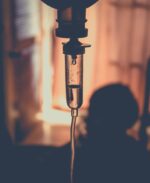#ECTRIMS2021 – Lower Relapse Rates Seen With Tysabri Than Ocrevus

Editor’s note: The Multiple Sclerosis News Today team is providing in-depth coverage of the virtual 37th Congress of the European Committee for Treatment and Research in Multiple Sclerosis (ECTRIMS), Oct. 13–15. Go here to see the latest stories from the conference.
People with multiple sclerosis (MS) treated with Tysabri (natalizumab) are less likely to experience disease relapses than those given Ocrevus (ocrelizumab), according to an analysis of real-world insurance data.
Data from a Phase 3b clinical trial also suggest that taking Tysabri every six weeks — which may reduce the risk of serious infections — is safe and equally as effective in people with relapsing-remitting multiple sclerosis (RRMS) as the once-a-month standard dose.
“These new data build upon the existing body of real-world safety and efficacy evidence for extended interval dosing with natalizumab [Tysabri] and highlight outcomes that are important to patients, including a reduced risk of relapse with Tysabri,” Maha Radhakrishnan, MD, said in a press release. Radhakrishnan is chief medical officer at Biogen, which sells Tysabri.
Results were presented in a pair of posters at the 37th Congress of the European Committee for Treatment and Research in Multiple Sclerosis (ECTRIMS), held virtually Oct. 13–15.
In one poster, “Claims-based relapse and hospitalization rates in patients with multiple sclerosis treated with natalizumab or ocrelizumab,” researchers analyzed insurance data to identify MS patients treated with either Tysabri or Ocrevus. The analysis was supported by Biogen. Ocrevus is marketed by Genentech, a member of the Roche Group.
Tysabri and Ocrevus “are both high-efficacy disease-modifying therapies approved in the United States to treat relapsing forms of multiple sclerosis,” Jacqueline Nicholas, MD, a neurologist at the OhioHealth MS center, said at ECTRIMS.
Based on the insurance data, the researchers identified MS patients treated with either therapy between 2017 and 2020. They then used statistical analyses to compare the relative risk of relapse with either therapy, while accounting for differences in clinical and demographic factors prior to treatment.
In total, their analysis included 835 patients treated with Tysabri, and 3,497 treated with Ocrevus.
Results showed that annual relapse rates were lower for Tysabri than Ocrevus, and patients on Tysabri were significantly less likely to have had any relapse after 12 or 24 months of treatment.
Further analyses indicated that patients on Tysabri were at an approximately 30% lower risk of any relapse. A similar difference was seen for outpatient relapses, or relapses that didn’t require hospitalization.
For relapses leading to hospitalization, analyses tended to favor Tysabri, though the difference between the two treatments was not statistically significant.
“Patients treated with [Tysabri] had significantly lower risk … for time to first relapse, and lower annualized relapse rates, compared to [Ocrevus]-treated patients,” Nicholas concluded, noting that these results may be informative for people considering starting on a high-efficacy MS therapy.
Tysabri is administered by infusion directly into the bloodstream. Infusions are typically given four weeks apart, but emerging evidence indicates that less frequent dosing may lower the risk of side effects, including a rare but serious brain infection called progressive multifocal leukoencephalopathy (PML).
Biogen sponsored the open-label Phase 3b NOVA trial (NCT03689972) to directly compare the efficacy of Tysabri given every four or every six weeks.
Results were discussed by John Foley, MD, a neurologist and director of the Rocky Mountain MS Clinic, in the poster, “Primary results of NOVA: a randomized controlled study of the efficacy of 6‑week dosing of natalizumab versus continued 4-week treatment for multiple sclerosis.”
NOVA enrolled 499 RRMS patients using Tysabri (300 mg) at standard dosing for one year, with no relapses over that period. Participants were randomized to continue standard once-a-month dosing, or switch to the less frequent dosing schedule for 72 weeks (about a year and four months). About 80% of patients in both groups completed the trial.
Its main goal was to compare the number of new or enlarging brain lesions at week 72 with both treatments. Based on previous studies with natalizumab, the number of such lesions was expected to be 0.3, but both treatments showed lesions “below the expected value,” Foley said.
Additional efficacy results were generally similar between the two dosing regimens: the proportion of patients with evidence of new or enlarging lesions was 4.1% with the four-week dosing schedule, and 4.3% with dosing every six weeks.
A similar number of patients in both groups were also relapse-free by the trial’s end (97.6% vs. 96.9%), and showed no signs of worsening disability over the course of the trial (92% vs. 90%).
Safety data were also similar between the groups, and consistent overall with Tysabri’s known safety profile. One patient in the every-six-weeks dosing group, who had high risk factors for infection, developed PML, highlighting the importance of monitoring for this serious side effect, according to Biogen.
Findings “suggest that patients on both [dosing regimens] of natalizumab are able to maintain a high level of efficacy and that the vast majority of patients who were stable on natalizumab at a [four-week] dosing interval can switch to [every-six-week dosing] without a meaningful loss of efficacy,” Foley said.
NOVA is expected to conclude in February 2023.







